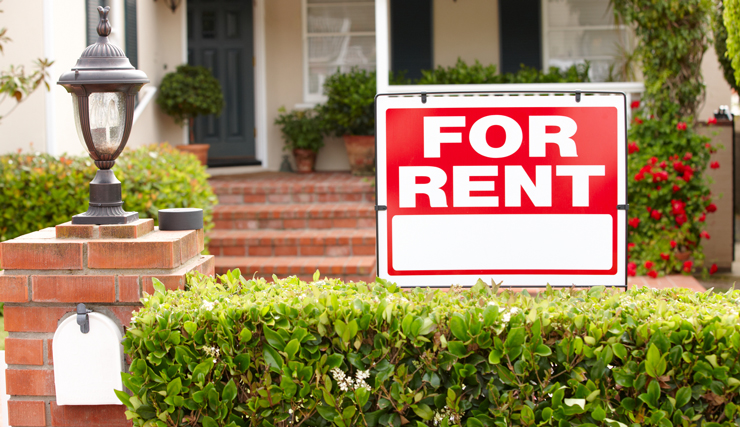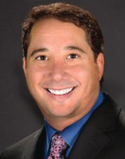Florida Supreme Court’s Latest Construction Defect Decision: Triggering the Insurer’s Duty to Defend in the Pre-Suit Process
The issue of whether a chapter 558 notice serves as a “claim” under a commercial general liability (“CGL”) policy, such as the one issued by Crum & Forster Specialty Ins. Co. (“C&F”) in Altman Contractors, Inc. v. Crum & Forster Specialty Ins. Co., No. SC16-1420, 2017 WL 6379535 (Fla. Dec. 14, 2017), has finally been resolved and construction defect claimants can expect earlier participation from their carriers.
Prior to the Altman decision, homeowners and/or condominium associations were frustrated during the chapter 558 process after sending a notice of claim because insured construction parties could not get insurers to become involved in pre-suit negotiations. Such a result was antithetical to the purpose of chapter 558 – which was instituted specifically to streamline the construction defect claims process and encourage early alternative dispute resolution.
In Altman, the following question was presented to the Florida Supreme Court: “Is the notice and repair process set forth in chapter 558, Florida Statutes, a ‘suit’ within the meaning of the CGL policy issued by the insurer, C&F, to the general contractor, Altman Contractors, Inc. (“Altman”)?” The Florida Supreme Court recently answered in the affirmative and held that the notice process set forth in chapter 558 does indeed constitute a “suit” within the meaning of the CGL policy at issue – which in turn means that insurance carriers can no longer sit back following receipt of a chapter 558 notice and must instead take an active role earlier in the process.
‘Duty to Defend’
The Altman case stems from defects in the construction of Sapphire Condominium, a high-rise residential condominium in Broward County. C&F insured Altman for the Sapphire project through a policy that provided, in pertinent part, as follows: “[w]e will pay those sums that the insured becomes legally obligated to pay as damages because of ‘bodily injury’ or ‘property damage’ to which this insurance applies. We will have the right and duty to defend the insured against any ‘suit’ seeking those damages.” Altman sought a declaratory judgment that C&F owed it a duty to defend and indemnify as part of the chapter 558 pre-suit process to resolve claims for construction defects, and that C&F breached the liability insurance policy by refusing to initially defend Altman in the suit against Sapphire. C&F denied that Sapphire’s chapter 558 notices invoked its duty to defend Altman under the policy because the notices did not constitute a “suit.” The insurance policy defined the term “suit” as follows:
“Suit” means a civil proceeding in which damages because of “bodily injury,” “property damage” or “personal and advertising injury” to which this insurance applies are alleged. “Suit” includes:
- An arbitration proceeding in which such damages are claimed and to which the insured must submit or does submit with our consent; or
- Any other alternative dispute resolution proceeding in which such damages are claimed and to which the insured submits with our consent.
The policy neither defined the term “civil proceeding” nor defined the term “alternative dispute resolution proceeding” within the context of the definition of the term “suit.” Notwithstanding, the Florida Supreme Court held that the chapter 558 process is included in the policy’s definition of “suit” as an “alternative dispute resolution proceeding.” [Emphasis added]
It is also noteworthy that since the Notice of Claim under chapter 558 is included in the policy’s definition of “suit” as an “alternative dispute resolution proceeding,” the insurer’s consent appears to be required in order to invoke its duty to defend the insured throughout the pre-suit process. In Altman, the Florida Supreme Court noted that “chapter 558 does not place any obligation on the insured to participate in the chapter 558 process. The chapter 558 framework has never been anything other than a voluntary dispute resolution mechanism on the part of the insured, despite its requirement that the claimant serve the insured with a notice before initiating a lawsuit.” Given that involvement in the chapter 558 pre-suit process is voluntary as opposed to mandatory on the part of the insurer, it remains to be seen whether insurance carriers will provide consent to participate in the process.
Nevertheless, upon receipt of a chapter 558 notice, it behooves contractors and subcontractors to tender the notice to their insurance carriers. It is in the insured-contractor or insured-subcontractor’s interest to encourage its insurance carrier to engage in the chapter 558 pre-suit process. Absent the insurance carrier’s involvement in the chapter 558 pre-suit process, the insured will be forced to incur its own costs and fees if the insured chooses to participate in the process without the consent of its insurance carrier. In the event that the insurance carrier fails to provide consent to engage in the chapter 558 pre-suit process and defend the insured, it may be in the insured-contractor or insured-subcontractor’s interest to litigate the matter because the insurance carrier’s duty to defend is then triggered and the insurance carrier will be forced to investigate the construction defect claims – shifting the financial burden from the insured-contractor or insured-subcontractor back onto the insurance carrier. In light of the foregoing scenario, it is more likely that the insurance carrier will be inclined to give consent to avoid the costs of litigation and to attempt to expeditiously settle the matter – but that is yet to be determined.
Settling Construction Defect Claims Now More Likely
Moreover, the insurance policy at issue in Altman is a standard commercial general liability policy and as such it is likely to have a profound impact on future chapter 558 construction defect litigation. Accordingly, defense carriers are more likely to be engaged in construction disputes, particularly during the pre-suit stage after a chapter 558 notice is received – or at least they should in light of this decision. As such, the chapter 558 process, unlike in many past years, is now likely to encourage the claimant and insured to attempt to settle construction defect claims prior to expending time and resources litigating those claims. Such a notion is consistent with the legislature’s aim in creating chapter 558 as an effective alternative dispute resolution mechanism, intended to curb construction defect litigation. Indeed, the Florida Supreme Court in Altman even stated, in dictum, that chapter 558 provides for a “statutorily required presuit process aimed to encourage the claimant and insured to settle claims for construction defects without resorting to litigation.”
In light of the foregoing, it is imperative that individual homeowners, homeowner associations and/or condominium associations, along with their experts, prepare detailed inspection reports that set forth the various construction defects affecting their property, what resulting damage is occurring as a result of those defects, the locations of the defects throughout the property, and determine compliance with the applicable building code, plans, and specifications. By virtue of more detailed reports in compliance with the requirements of chapter 558, it seemingly becomes more likely that construction defect disputes will result in settlements at an earlier stage – thereby saving the parties exorbitant amounts of money that otherwise would be expended in litigation.
 David B. Haber is the founding partner of Miami-based Haber Slade, P.A. He is a commercial litigator with 30 years of experience who has handled multiple complex commercial disputes throughout Florida, including complex commercial litigation, construction, and condominium and homeowners’ association disputes. David can be reached at dhaber@dhaberlaw.com.
David B. Haber is the founding partner of Miami-based Haber Slade, P.A. He is a commercial litigator with 30 years of experience who has handled multiple complex commercial disputes throughout Florida, including complex commercial litigation, construction, and condominium and homeowners’ association disputes. David can be reached at dhaber@dhaberlaw.com.
 Frank Soto is a partner with the firm. He focuses on construction litigation. Frank can be reached at fsoto@dhaberlaw.com.
Frank Soto is a partner with the firm. He focuses on construction litigation. Frank can be reached at fsoto@dhaberlaw.com.
Brett Silverberg is a JD/MBA student at the University of Miami and a law clerk at Haber Slade. The firm is on the internet at www.haberslade.com.



 David T. Podein is a partner at the law firm of Haber Slade. He concentrates his practice in the areas of real estate leasing, financing, and acquisitions/closings, real estate development, condominium and community association law, and construction law. David can be reached at
David T. Podein is a partner at the law firm of Haber Slade. He concentrates his practice in the areas of real estate leasing, financing, and acquisitions/closings, real estate development, condominium and community association law, and construction law. David can be reached at 









 Michael J. Gelfand, the Senior Partner of Gelfand & Arpe, P.A., emphasizes a community association law practice, counseling associations and owners how to set legitimate goals and effectively achieve those goals. Gelfand is a Florida Bar Board-Certified Real Estate Lawyer, Certified Circuit and County Civil Court Mediator, Homeowners Association Mediator, an Arbitrator, and Parliamentarian. He is the Chair of the Real Property Division of the Florida Bar’s Real Property, Probate & Trust Law Section, and a Fellow of the American College of Real Estate Lawyers. Contact him at
Michael J. Gelfand, the Senior Partner of Gelfand & Arpe, P.A., emphasizes a community association law practice, counseling associations and owners how to set legitimate goals and effectively achieve those goals. Gelfand is a Florida Bar Board-Certified Real Estate Lawyer, Certified Circuit and County Civil Court Mediator, Homeowners Association Mediator, an Arbitrator, and Parliamentarian. He is the Chair of the Real Property Division of the Florida Bar’s Real Property, Probate & Trust Law Section, and a Fellow of the American College of Real Estate Lawyers. Contact him at 
 Alan Garfinkel has counseled homeowners, townhomes, condominium associations, and individuals throughout Florida from his same Central Florida office for 25 years. He continues to passionately work for those living in and working for community associations. Garfinkel received the highest ethics rating (AV) for more than a dozen consecutive years. Attorney peer review ratings provide objective grades based on confidential evaluations by attorneys and judges measuring a lawyer’s ethical standards and legal ability. Garfinkel Whynot only represents community associations, not big corporations like developers, banks, and insurance companies that can develop conflicts with communities. For more information, visit
Alan Garfinkel has counseled homeowners, townhomes, condominium associations, and individuals throughout Florida from his same Central Florida office for 25 years. He continues to passionately work for those living in and working for community associations. Garfinkel received the highest ethics rating (AV) for more than a dozen consecutive years. Attorney peer review ratings provide objective grades based on confidential evaluations by attorneys and judges measuring a lawyer’s ethical standards and legal ability. Garfinkel Whynot only represents community associations, not big corporations like developers, banks, and insurance companies that can develop conflicts with communities. For more information, visit 
 Ryan D. Poliakoff is a Partner of Backer Aboud Poliakoff & Foelster and serves as general counsel to condominiums, homeowners associations, and country clubs throughout South Florida. He is the co-author of New Neighborhoods—The Consumer’s Guide to Condominium, Co-Op, and HOA Living. In addition to representing associations, he is a frequent contributor at seminars and workshops for attorneys and board members, and he has written hundreds of articles for magazines and newspapers throughout the United States. He can be reached at
Ryan D. Poliakoff is a Partner of Backer Aboud Poliakoff & Foelster and serves as general counsel to condominiums, homeowners associations, and country clubs throughout South Florida. He is the co-author of New Neighborhoods—The Consumer’s Guide to Condominium, Co-Op, and HOA Living. In addition to representing associations, he is a frequent contributor at seminars and workshops for attorneys and board members, and he has written hundreds of articles for magazines and newspapers throughout the United States. He can be reached at 
